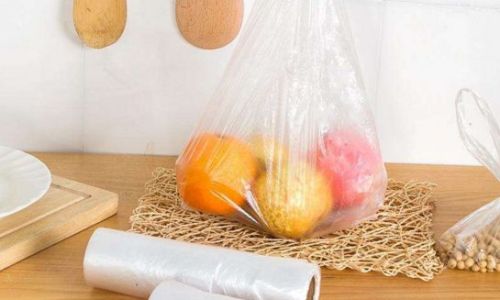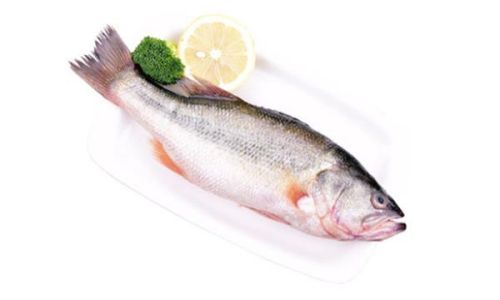Introduction
Potatoes, a staple in kitchens worldwide, raise a common storage dilemma: Should they be refrigerated, and if so, does wrapping them in fresh-keeping bags enhance or undermine their shelf life? This article delves into the biology of potatoes, the impact of cold storage, and the role of modern packaging solutions. By exploring starch conversion, moisture management, and ethyl gas dynamics, we uncover the optimal ways to preserve this versatile vegetable while avoiding common pitfalls like spoilage or texture degradation.
The Natural Habitat of Potatoes: Understanding Their Post-Harvest Needs
Potatoes, botanically classified as Solanum tuberosum, originate from the Andean highlands of South America, where cool nights and moderate days created ideal growth conditions. Even after harvest, they retain a preference for environments mimicking their native habitat. Ideal storage temperatures hover between 45°F (7°C) and 50°F (10°C), with low humidity and dark conditions to prevent sprouting and greening.
Commercial storage facilities replicate these conditions using climate-controlled warehouses, but home cooks often lack such resources. This gap has led to debates about refrigeration, a tool designed to slow spoilage but potentially at odds with potatoes’ physiological needs.
Refrigeration: Friend or Foe? The Cold Truth About Potato Storage
Refrigerators typically operate at 35°F (2°C) to 40°F (4°C), significantly colder than potatoes’ preferred range. While cold temperatures inhibit bacterial growth, they also trigger biochemical changes in the tuber:

- Starch to Sugar Conversion: Below 50°F (10°C), potatoes convert starch into reducing sugars like glucose and fructose. This process, intended as a survival mechanism, alters flavor profiles, making refrigerated potatoes taste noticeably sweeter.
- Texture Alterations: Prolonged cold exposure disrupts cell walls, leading to a mealy or gritty texture when cooked. This effect is particularly pronounced in waxy potato varieties.
- Acrylamide Formation: Heating sugar-rich potatoes (e.g., frying or baking) at high temperatures can produce acrylamide, a neurotoxin and potential carcinogen. The FDA and EFSA warn against excessive acrylamide consumption, linking it to health risks.
Despite these drawbacks, refrigeration remains tempting for those with limited pantry space or in hot climates. The question then becomes: Can fresh-keeping bags mitigate these issues?
Fresh-Keeping Bags: Innovations in Food Preservation
Modern fresh-keeping bags, often made from polyethylene or biodegradable materials, claim to extend shelf life through controlled atmospheres. Their efficacy hinges on two factors: permeability and humidity control.
- Gas Exchange: High-quality bags allow oxygen and carbon dioxide exchange while limiting ethylene, a ripening hormone emitted by potatoes. This balance can slow degradation without inducing anaerobic conditions.
- Moisture Management: Trapping excess moisture accelerates rot, while complete dryness causes shriveling. Bags with micro-perforations or moisture-absorbing layers aim to strike a middle ground.
- Light Blockage: Some bags incorporate UV-resistant coatings to prevent chlorophyll production, which turns potatoes green—a sign of solanine accumulation, a toxic alkaloid.
However, not all bags are created equal. Cheap plastic wraps may exacerbate humidity issues, turning potatoes into a soggy mass. Conversely, vacuum-sealed bags, while effective for meats, risk crushing tubers and accelerating spoilage by eliminating protective gas layers.
The Ethylene Dilemma: How Potatoes Influence Their Environment
Potatoes, like many fruits and vegetables, produce ethylene gas. While ethylene primarily regulates ripening in climacteric produce (e.g., bananas), its role in potatoes is more nuanced:
- Sprout Suppression: Low ethylene levels can inhibit sprouting, a benefit for long-term storage.
- Quality Degradation: High concentrations accelerate starch breakdown and softening, shortening shelf life.
Fresh-keeping bags designed to adsorb ethylene (e.g., those with activated charcoal linings) may offer partial solutions. However, their effectiveness depends on bag size, potato quantity, and storage duration.
Best Practices for Potato Storage: Beyond the Refrigerator
For optimal results, consider these alternatives to refrigeration:
- Cool Pantry Storage: Place potatoes in a dark, well-ventilated area (e.g., a basement or cupboard) between 45°F (7°C) and 50°F (10°C). Use breathable containers like burlap sacks or mesh produce bags to allow airflow.
- Paper Bag Method: A brown paper bag partially opened at the top absorbs excess moisture while preventing light exposure. Add an apple to the bag to leverage its ethylene-absorbing properties.
- Avoid Common Pitfalls: Never store potatoes near onions, as both emit gases that accelerate spoilage. Similarly, keep them away from sinks or dishwashers to prevent humidity spikes.
When Refrigeration Is Unavoidable: Mitigating Risks with Fresh-Keeping Bags
If refrigeration is necessary (e.g., in small apartments or tropical regions), follow these steps:

- Pre-Conditioning: Allow potatoes to acclimate at room temperature for 1–2 days before refrigeration. This slows starch conversion.
- Bag Selection: Opt for bags labeled “breathable” or “for vegetables.” Avoid airtight containers unless using vacuum sealing for short durations.
- Temperature Zoning: Place potatoes in the crisper drawer, the warmest part of the fridge, ideally above 40°F (4°C).
- Post-Refrigeration Care: Before cooking, let potatoes sit at room temperature for 30 minutes to reduce condensation and improve texture.
Extended Shelf Life: Preparing Potatoes for Storage
How you handle potatoes post-purchase significantly impacts their longevity:
- Curing: Farmers often cure potatoes at 50°F (10°C) and 95% humidity for 10–14 days post-harvest to heal minor wounds. While impractical for home cooks, this highlights the importance of gentle handling.
- Inspection: Discard any potatoes with soft spots, green tints, or excessive sprouts before storage to prevent contamination.
- Washing: Rinse dirt off potatoes only right before use. Excess moisture promotes bacterial growth.
Cooking Considerations: Adapting to Refrigerated Potatoes
Refrigerated potatoes require culinary adjustments:
- Boiling: Add a pinch of baking soda to water to counteract starch gelatinization, resulting in fluffier mashed potatoes.
- Frying: Soak sliced potatoes in cold water for 30 minutes to remove excess sugars, minimizing acrylamide formation during frying.
- Baking: Lower oven temperatures by 25°F (14°C) and extend cooking time to prevent burning from sugar caramelization.
Environmental and Economic Considerations
The choice between refrigeration and pantry storage has broader implications:
- Energy Use: Refrigerators consume 4–8% of global household electricity. Storing potatoes outside the fridge reduces energy demands.
- Packaging Waste: Single-use plastic bags contribute to pollution. Opt for reusable silicone pouches or beeswax wraps as eco-friendly alternatives.
- Cost Analysis: While fresh-keeping bags add upfront costs, they may reduce food waste, offsetting expenses over time.
Urban vs. Rural Storage Strategies
City dwellers with limited space often rely on refrigeration, while rural households with root cellars or cool basements can mimic commercial storage. Innovations like mini-greenhouses or evaporative cooling systems offer middle-ground solutions for suburban homes.
The Future of Potato Storage: Smart Packaging and Biotechnology
Research into “smart films” embedded with antimicrobial agents or oxygen scavengers could revolutionize storage. Genetically modified potatoes with reduced sugar conversion rates are also in development, though consumer acceptance remains uncertain.
Conclusion: Balancing Convenience and Quality
The decision to refrigerate potatoes in fresh-keeping bags hinges on individual circumstances. While refrigeration extends shelf life, it alters flavor and texture, and may pose health risks if not managed correctly. For most households, a cool, dark pantry with breathable bags remains the gold standard. However, those opting for refrigeration can mitigate drawbacks through careful bag selection, temperature control, and culinary adjustments. As food science advances, expect innovations that harmonize convenience with preservation, ensuring potatoes remain a kitchen staple for generations to come.






0 comments